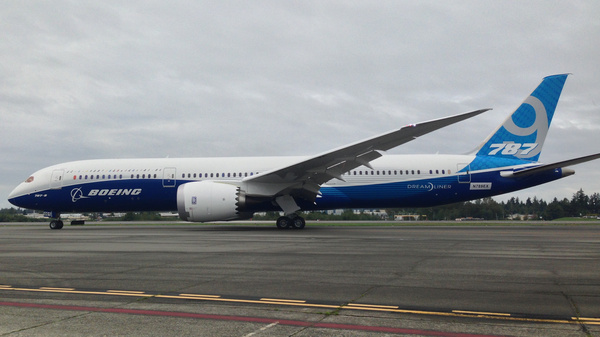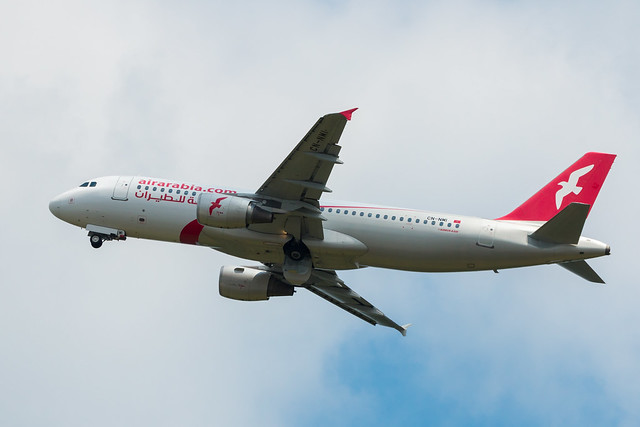Eva A333 at Taipei on Sep 13th 2012, temporary runway excursion on landing
Last Update: September 12, 2013 / 12:50:42 GMT/Zulu time
Incident Facts
Date of incident
Sep 13, 2012
Classification
Incident
Aircraft Registration
B-16331
Aircraft Type
Airbus A330-300
ICAO Type Designator
A333
At the time of final approach, the weather met the CAT I precision approach standard, the visibility decreased and there was heavy shower during landing due to the influence of thermal convection above the airport area. During the flare the flight crew had difficulties to precisely maneuver the aircraft and the aircraft drifted to the right side of the runway due to visibility limited by heavy rain, the flight crew did not reject the landing and the aircraft touched down at the right side of the runway centerline. After landing, the flight crew did not correct the direction of the aircraft resulting in the aircraft veering off the runway.
Findings related to risks:
The flight crew was advised of rain before commencing the approach and armed the go-around procedure which showed the flight crew had adequate situation awareness, however the flight crew did not exercise appropriate judgment and did not take action according to the deterioration of weather and abrupt visibility reduction during the landing phase. The actual approach met the criteria of a stable approach; however the Pilot Monitoring did not perform standard call-out when the speed range met the call out criteria and EVA operating procedures did not require any standard call-outs regarding the aircraft veering off the runway centerline after touchdown.
The ASC reported the captain (40, ATPL, 11,384 hours total, 612 hous on type) was pilot flying, the first office (51, ATPL, 9,298 hours total, 787 hours on type) was pilot monitoring.
The crew received weather information indication 5000 meters of visibility in fog with clouds at 2500 feet and 5000 feet. The crew decided to use full flaps and low autobrakes. While maneouvering for the approach to runway 10 descending through about 9500 feet the crew received indications on their weather radar that thunderstorms were moving towards the aerodrome from the south and requested to deviate from the assigned heading to avoid the cloud. The crew checked ATIS again now stating visibility of 7000 meters with towering cumulonimbus at 2000 feet, the runway was wet, winds from 300 degrees at 5 knots, the tower advised winds were from 100 degrees at 9 knots gusting up to 15 knots.
While on final approach descending through 1000 feet about 3nm before the runway threshold the tower reported visibility of 3000 meters and a rain shower over the aerodrome. First officer and captain call out runway in sight, the captain arms the automation for a possible go-around and advises the first officer of increased possibility of a go-around. Descending through 500 feet the first officer calls out "stable", the captain acknowledges and disconnects the autopilot and takes manual control of the aircraft.
Following a number of larger control inputs a brief left hand rudder input is registered by the flight data recorder 11 seconds before touchdown of the main wheels, the aircraft was roughly on the glideslope and localizer at that point, the aircraft rolled right to about 5 degrees of bank, and the aircraft began to drift off the runway center line to the right.
The aircraft floated until the main wheels touched down 2560 feet (780 meters) past the runway threshold and right of the runway center line, the right main gear crossed the right runway edge line 3630 feet (1106 meters) down the runway, the nose gear touched down 3890 feet (1186 meters) past the runway threshold, visibility at that point was very poor, the flight crew reported barely seeing the runway edge lights briefly for 2 or 3 seconds, the captain considered for a moment to go around but decided to continue the landing as the safer option, after passing taxiway CC the right main gear reached a maximum of 1.8 meters right off the right runway edge line and returned within the runway edge line 4610 feet (1405 meters) down the runway. The further roll out was without incident, the crew remained unaware they had veered off the runway but began to suspect a runway excursion when tower inquired about their position and whether they could taxi. A runway inspection found two runway edge lights damaged, the aircraft sustained no damage.
The flight data recorder showed an airspeed of 134.9 KIAS and a ground speed of 145 knots at 335 feet AGL, at 50 feet AGL the aircraft showed 142.2 KIAS and 132 knots over ground. 9 seconds afte descending through 50 feet AGL the right main wheels touched down at 139.6 KIAS, 130 knots over ground shortly followed by the left main wheels about 0.25 seconds later, the aircraft showed a magnetic heading of 96 degrees, the winds were indicated from 091 degrees at 13 knots, the vertical rate of descent was 304 fpm, a maximum vertical acceleration of +1.15G was registered. The thrust reversers were deployed, the heading changed further to 95.3 degrees, the nose gear touched down, the heading changed further to 88.9 degrees followed by left rudder inputs that returned the aircraft back onto the runway, reverse thrust was then applied.
Incident Facts
Date of incident
Sep 13, 2012
Classification
Incident
Aircraft Registration
B-16331
Aircraft Type
Airbus A330-300
ICAO Type Designator
A333
This article is published under license from Avherald.com. © of text by Avherald.com.
Article source
You can read 2 more free articles without a subscription.
Subscribe now and continue reading without any limits!
Read unlimited articles and receive our daily update briefing. Gain better insights into what is happening in commercial aviation safety.
Send tip
Support AeroInside by sending a small tip amount.
Newest articles
American B789 at London on OOct 3rd 2025, could not retract flaps
An American Airlines Boeing 787-9, registration N844MC performing flight AA-737 from London Heathrow,EN (UK) to Philadelphia,PA (USA), was climbing…
Arabia Maroc A320 at Montpellier on Sep 15th 2025, loss of separation during go-around
An Air Arabia Maroc Airbus A320-200, registration CN-NMI performing flight 3O-335 from Casablanca (Morocco) to Montpellier (France), was on final…
Subscribe today
Are you researching aviation incidents? Get access to AeroInside Insights, unlimited read access and receive the daily newsletter.
Pick your plan and subscribePartner

ELITE Simulation Solutions is a leading global provider of Flight Simulation Training Devices, IFR training software as well as flight controls and related services. Find out more.
SafetyScan Pro provides streamlined access to thousands of aviation accident reports. Tailored for your safety management efforts. Book your demo today
AeroInside Blog
Popular aircraft
Airbus A320Boeing 737-800
Boeing 737-800 MAX
Popular airlines
American AirlinesUnited
Delta
Air Canada
Lufthansa
British Airways


